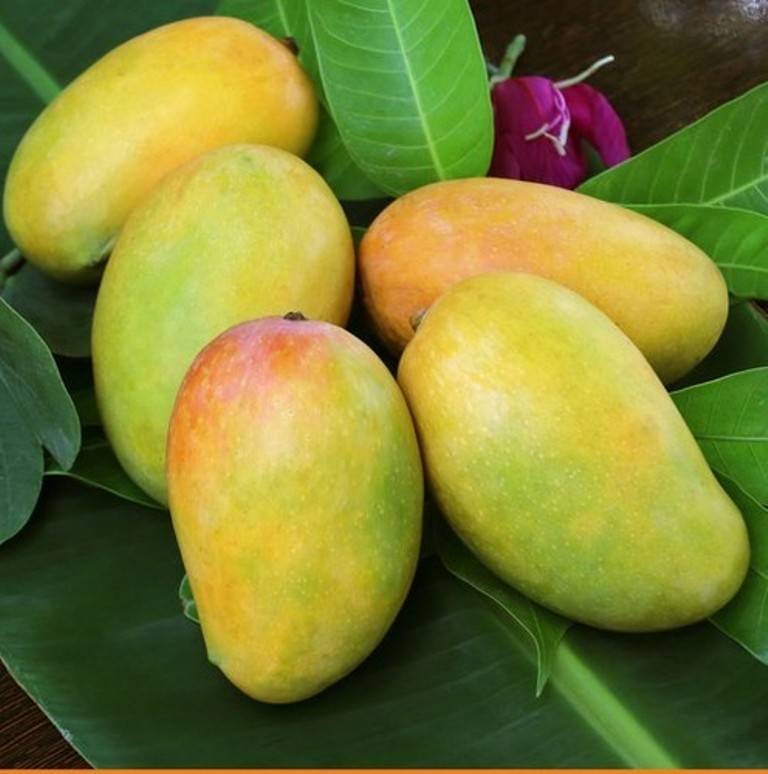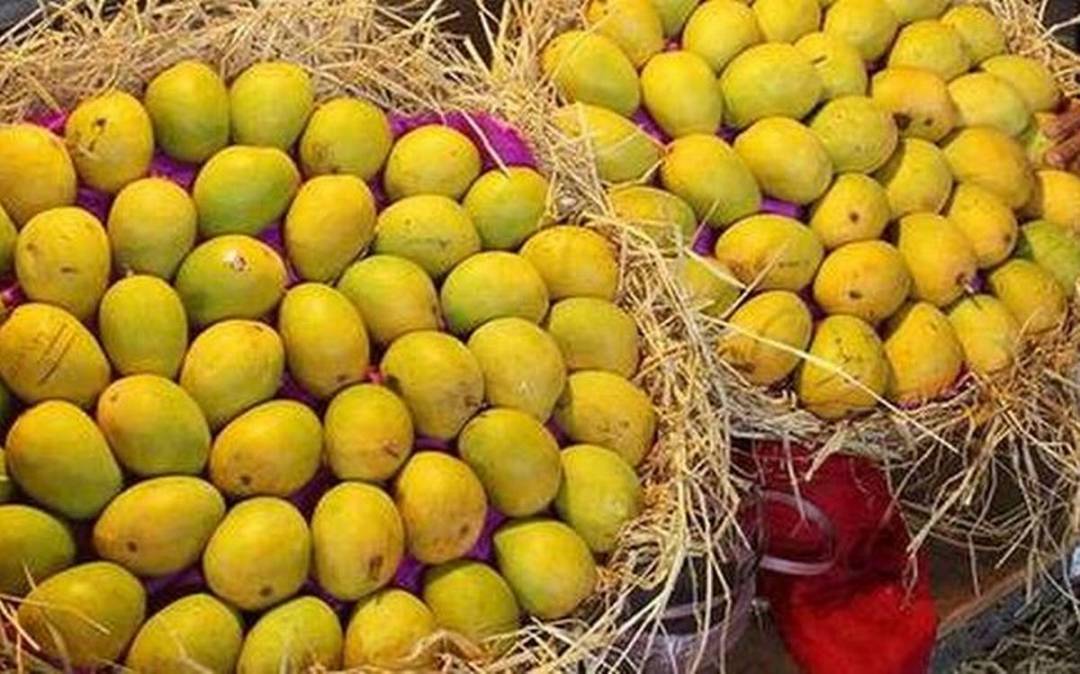
Kesar mangoes of Gujarat are famous in the world. This is a much-awaited fruit during summer. Alas, this time, the mango is hard hit by cyclone Tauktae. Most of the crop is destroyed and the rest is fetching just Rs.4 per kilo in the Talala market yard.
Unfortunately, yes; but this Queen of Mangoes (this is what Kesar mango is called) does not know failure. Its fame still shines. Cyclone Tauktae may have destroyed the mango harvest, but not the popularity of this mango. No wonder, it’s the queen.
Origin of Gir Kesar mangoes
Kesar mangoes originated in Junagadh, a quintessential and busy town near the coast of Gujarat. The first cultivar of this mango was grown by Junagadh Wazir Sale Bhai in 1931 in Vanthali.
Thereafter, around 75 grafts of this variety were grown at the foothills of mountain Girnar located at the Junagadh Laal Dori farm.
How did Kesar mango get its name?
In 1934, the Nawab of Junagadh Muhammad Mahabat Khan III remarked while looking at the beautiful orange flesh of the mango fruit, “This is Kesar.” Kesar in Hindi and Gujarati means “saffron.”
Hence, the mango got its name Kesar.
Kesar mango cultivation area
Kesar mangoes, precisely known as Gir Kesar mangoes, are cultivated at the foothills of Girnar near Junagadh in Gujarat, Western India.
It is grown in around 20,000 hectares area in districts of Amreli and Junagadh of Saurashtra region of Gujarat. The talukas in these districts that grow this mango include Junagadh, Talala, Vanthali, Mendarda, Kodinar, Maliya, Visavadar, and Una areas of Jundagadh district and Khambha taluka of Amreli district. The estimated annual production of mangoes from these areas is 2 lakh tonnes.
The mango cultivar grown only at the Gir foothills is officially the Gir Kesar mango.
Talala Gir, which is also called Mango Market Yard, is the biggest market for Gir Kesar mangoes. The yard is located 45 km from Gir National Park.
Time of cultivation and harvest
Cultivation of Kesar mangoes begins around October after the monsoon is over. Fruits are ready for harvest in April-May. The fruits are harvested when they are at green mature stage.
Kesar mango has received the GI tag
Giving GI (Geographical Indication) tag to Gir Kesar mangoes was first proposed by Gujarat Agro Industries Corporation Ltd. (GAIC). Later, in 2010, the Junagadh Agricultural University filed an application for the same.
In 2011, Gir Kesar mangoes obtained the GI tag through registry in Chennai.
Now, the name “Gir Kesar” is exclusive to the Gir region of Gujarat. Kesar mangoes, thus, have become the first agricultural produce from Gujarat state and the second mango variety in the whole of India to receive the GI tag. The first variety to receive a GI tag is the Dasheri mango of Uttar Pradesh.
Why Kesar is called Queen of Mangoes?
It is not known exactly how Kesar mangoes came to be called the Queen of Mangoes. Similarly, Alphonso mango, which is another top variety of Gujarat, is called the King of Mangoes.
Both varieties are equally popular and relished by not only Gujaratis, but also Indians and foreigners.
Apart from these two most-loved varieties, Gujarat produces other mango varieties like Dasehri, Langara, Neelam, Totapuri, Deshi, Rajapuri, and others.
Also, read the top commercial varieties of mangoes grown in India.

Kesar mango vs. Alphonso mango
Alphonso is the top mango variety of Gujarat in terms of exports. Kesar is the second.
Alphonso mango is usually grown in South Gujarat and in Kutch. Mangoes from these areas are regarded as the best ones globally.
Kutch also grows Kesar mangoes. In fact, after cyclone Tauktae devastated Gir crop, Kutch Kesar mangoes are more in demand.

The rise of Kutch Kesar in 2021
The world is a strange place. At the same time and for the same reason, there can be happiness at one place and sadness at the other.
Here, we are referring to one time, which is summer, and one reason, cyclone. On one hand, farmers of Saurashtra region of Gujarat are in despair because more than 90% of their standing crops is destroyed, including the famous Gir Kesar mangoes. As a result, market value of these mangoes has gone down this year.
On the other hand, farmers of Kutch are high in hopes because their Kutch Kesar mangoes are more in demand this year due to the destruction of Gir Kesar.
Kutch mangoes arrive in the market a month after Gir Kesar market goes off. According to farmers, this year, wholesalers and traders are giving them 30% more price for the mangoes than that last year. This is because they are failing to sell enough Gir Kesar mangoes this time.
One of the traders of Kutch told media people recently, “this year, demand for Kutch Kesar is huge due to damage to Gir mangoes. We are offering better prices to farmers to procure in bulk.”
Harvesting of Kutch Kesar begins a month after harvesting of Gir, in the first 10 days of June.
Taste of Kutch Kesar is different from that of Gir Kesar, but it still holds a place in the hearts of mango lovers.
Which mango tastes the best?
It’s always been a matter of discussion between mango lovers that which mango tastes the best. Many are confused on how to choose the best mango. However, to tell you the truth, each mango has a different taste, whether it is Alphonso, Kesar, Totapuri, or any other.
Alphonso gets more marks than Kesar in appearance as the latter has tiny marks, pale skin, and duller appearance, yet it is the most loved mango of the world due to its taste. Talk of aroma and Kesar gets more votes than Alphonso.
Yet, it’s hard to conclude which mango is the best. We leave this to you. Pick a variety that your taste buds love.












